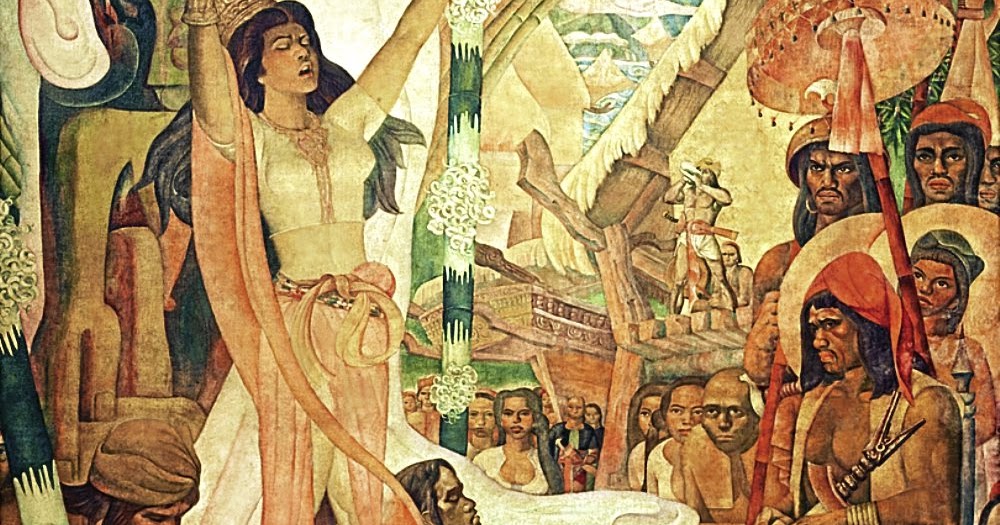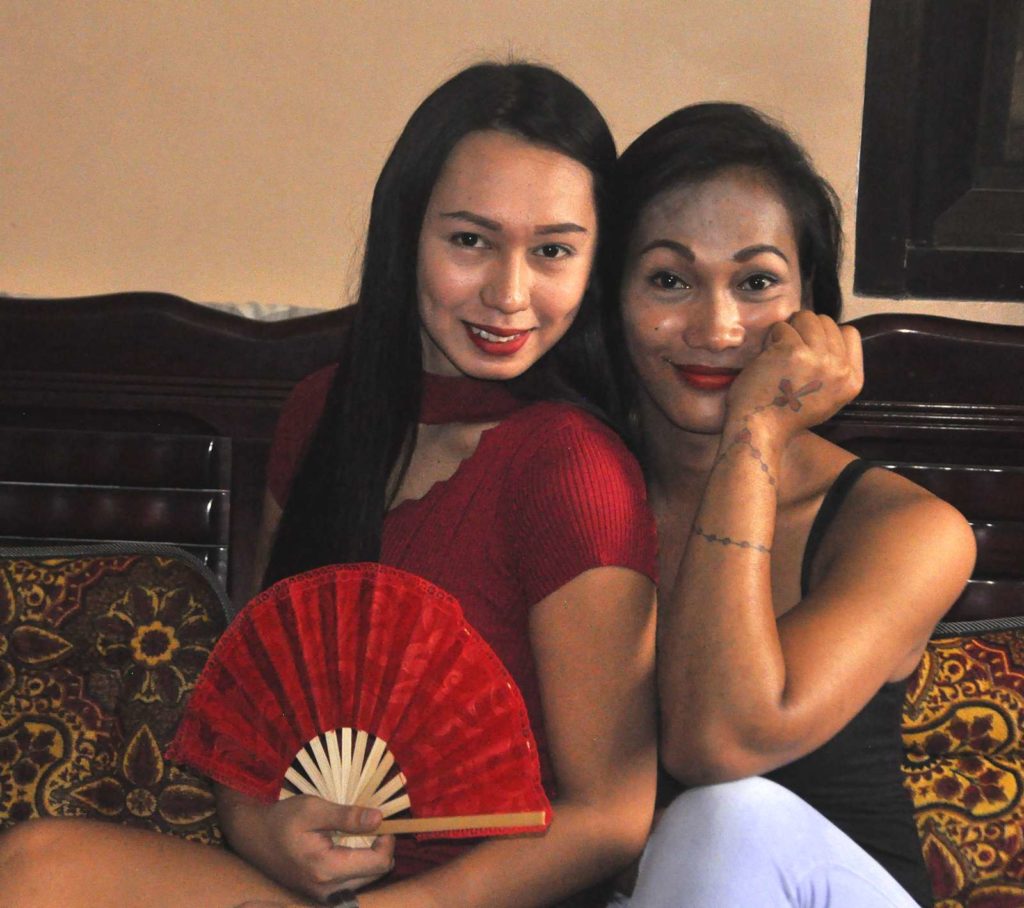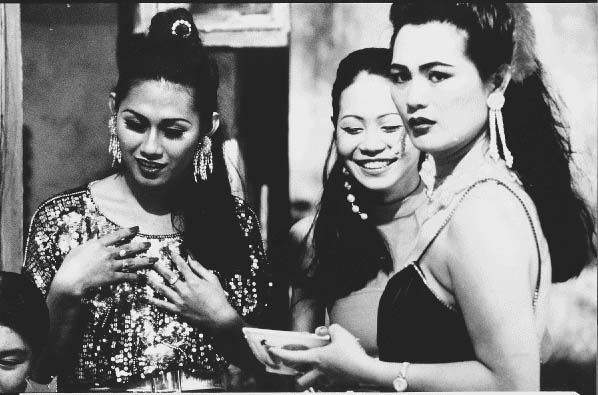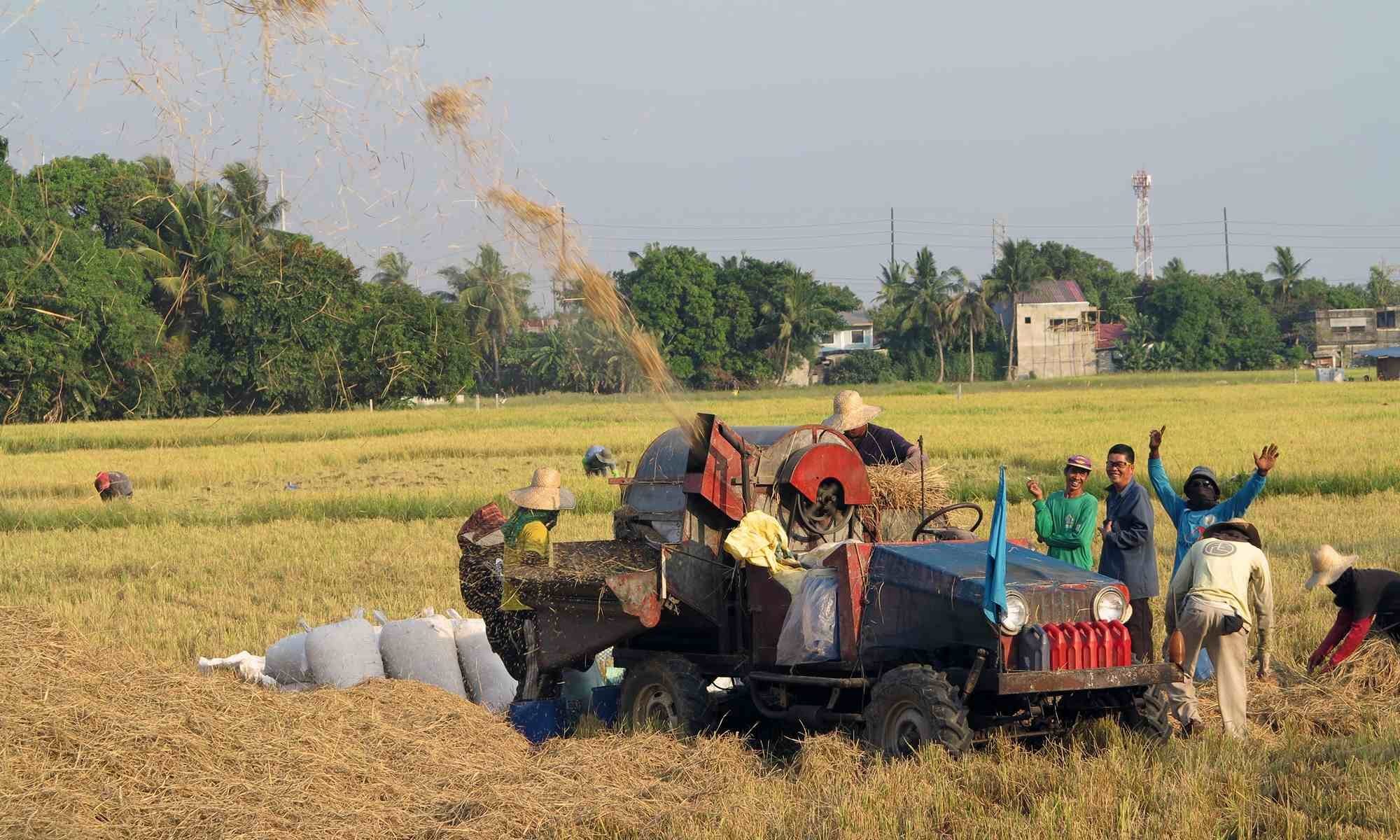Originally posted 2023-05-28 13:01:06.
Kabaklaan, the way of the bakla, might not be perfect, but it is kind, supportive and enabling. It helps sex-atypical boys to come to terms with their special sexuality and therefore their gender, in a gentle, even loving way.
[kofi]
A feminine boy will go to the volleyball court and meet the baklas there; but they will not seduce him or try to rape him. They will befriend him, if he is as they are. They will defend him against bully-boys, from his older brothers and their friends, putting their arms around him. They will soothe his hurts and reassure him when he cries. There is no pressure or compunction in kabaklaan, but if a boy wants to learn, then he will find teachers – and note: teachers, not pedicators.
Nothing is forced.
Nothing is forced in the way of the bakla. If a boy is pretty, she might be encouraged to dance or to join a pageant; if she is too young or not confident enough to do that, a role can always be found, preparing costumes or scenery, doing make-up and hair. But it’s all voluntary, just fun.
Other than the amused mothers, those adults who occasionally pass by are either men or older baklas. The former will be ogled by the batang baklas of the group and the latter will be pestered for ‘beauty tips’ and often, for hormones.
These are safe environments in which Sexually Inverted children can grow up to be themselves and in which, their decisions will be respected.

How did the way of the bakla begin?
When the Spanish colonised the Philippines in the sixteenth century, they were accompanied, as always, by Catholic priests, whose function was partly to minister to the troops, partly to convert the natives but mainly to record what the conquistadors found, so that the Pope would get his due share of the booty. So they were, essentially, embedded reporters and later, formed the bureaucracy through which the Spanish administered the islands.
Across the territory, these priests found individuals born with male sexual organs who were considered to be women by the societies they lived in. They dressed in women’s clothing, often marrying men and worked with women in the home and the fields.
They were seen not only as people whose sexuality was different from most, but who were also closer to the divine, often becoming spiritual leaders, known as bayoguin, those who were an intermediary between the mundane and spirit world. This is a role, albeit attenuated, that baklas and their equivalents still play, even today.

According to the Manila Manuscript (also known as the Boxer Codex), these transwomen were katalonans, or priestesses, who venerated Lakapati, the transsexual deity of fertility and agriculture. Also known as Ikapati, she was the Great Mother Goddess of the Tagalog, and was both female and male. Today, Lakapati is a patron to farmers and fishermen, and to baklas and their equivalents.
[kofi]
Lakapati is by no means the only deity in the Philippines or, indeed, similar cultures across the world, who is both male and female but who is venerated as a woman. She is but one example of many. The acceptance of sexual and gender ambiguity which is implied in the veneration of a deity who is at once male and female, masculine and feminine, is central to southeast Asian culture and the Philippines are no exception. One consequence has been that these cultures are historically open to the status ‘boy-became-woman’ or its female equivalent, ‘girl-became-man.’
Given that anal sex has never been taboo in these cultures, being considered as natural as any other form, and the general acceptance of the idea that some women were born male, it should not be even a little surprising that trans expressions were and remain prominent in them. It is just a fact that a male can be penetrated just as a female can and sexually satisfy her partner likewise; while this may be more tricky to achieve for the ‘girl-became-men’ there are plenty of other items that can be employed as a substitute for a penis, for example the daikon or Asian radish (Raphanus sativus.)
All across the world
Everywhere the conquistadors went, across the globe, they discovered transwomen. MG Peletz, in Gender Pluralism, documents many such examples, as does Amara Das Wilhelm in Tritiya-Prakriti: People of the Third Sex.
[kofi]
Essentially, across the entire face of the world, in almost every traditional culture, the idea that some women are born male and some men are born female has been not just accepted but central to the cultures themselves. Such people are expected, by these societies, which usually venerate motherhood and the Goddess, to have the sexual appetites of the gender they identify and present as.
Boys who become women and have sex with men are more than normalised in these cultures; they become exemplary. In the pre-colonial Philippines, having a bakla son was not considered a disgrace, it was instead a huge blessing on the family, that the Great Goddess had given one of her own to protect it. A bakla son was a treasure, not a curse.

It is clear that in these cultures, transsexuals are not marginalised or regarded with horror. Instead, they are accorded elevated status. We might call these cultures transphilic.
While genuine cultural transphilia is reduced greatly from its former zenith today, partly because of the arrival of hostile religions, cultures and colonists, its roots go deep into the animistic past of southeast Asia. These are cultures where people literally believe in the most horrific monsters of the night and accept as normal the ubiquitous presence of ghosts and spirits, not to mention an entire clan of supernatural beings called engkantos living in Tenement, a major housing project in Taguig, part of the Manila conurbation. (Now abandoned, at least by humans.} They believe in an extensive bestiary, the Goddess and the ideas fundamental to animism.
These are just the kind of cultures wherein transphilia might thrive. I would suggest that today, Filipino culture generally is one of the most transphilic in the world, with only a few Oceanic and tribal cultures being more so.
Modern colonialism
The Anglo-Saxon West today, and especially the USA, is the world’s most aggressively colonising culture. It is also the most transphobic. It has a rigidly prescriptive understanding of the world, in which sex and gender are synonymous and immutable. This, of course, displays one of the great failings of the culture, its inability to ‘think outside the box’.
[kofi]
In this culture, one’s gender must always conform to expectations for one’s sex, otherwise one will be delegitimised or worse. It even goes to the extent of sanctioning sexual relations between two members of the same sex, as long as they both present in the gender assumed to conform to their sex and not to be too obvious about it.
In other words, ‘homogender’ or, as the culture would have it, ‘same-sex’ relations are permitted, while heterogender relations which are actually same-sex are not. In other words, two ‘gay men’ kissing in the street is condoned but a heterosexual man escorting his transsexual girlfriend, should her status become known, will be vilified; yet in both cases the parties are all male.
This is an absurdity; the way of the bakla is better.
Ask yourself: why should a boy who wants a man (and not a faux-masculine Invert in denial) not make himself into a woman? Why would he not adopt the range of sexual attractors that he knows – he can literally see, from the examples of the women all around him – to be effective in securing his desired Erotic Target – a man?

Women around her are practising femininity all the time and self-evidently, it works: the men can’t stop watching them– so why would a boy who wants a man not do the same? Why would he pretend to be a man himself? Why should he be expected to play along with this patent absurdity? Where could the sense possibly be in that? Obviously, she is a girl, because of her gender identification and her sexuality; so the most appropriate thing for her to do – and likely the most successful in mating terms – is to perform femininity to the maximum she can.
[kofi]
How stupid, how completely immune to observable reality does one have to be, not to understand that heterosexual men are attracted to femininity? What’s surprising or revolutionary about that? Nothing and the real truth is that ever since humans began to write they have remarked males who presented as women and had sex with men.
Kabaklaan and the clan-family
The striking thing about the cultures I describe is how conservative they all are. They venerate the traditional clan family, which is not the same as the Western ‘nuclear’ family and is instead built around the community of mothers. This has allowed them to give prominence to women, rightly, as the focus of the cultures, rather than men. This is because women are the mothers and without them there would be no culture, nor any humans at all.
The modern Western notion of the nuclear family is by no means universal. According to historian Peter Laslitt, who studied parish records to find the data, the nuclear family, that is, ‘one man, one woman and their children’ had been established in at least parts of England by the 13th century. It was, he believes, instrumental in developing the social flexibility that gave rise to the Industrial |Revolution, which, in a neat affirmation, took place in those areas where this model was established, rather than those where the traditional clan model remained. However we should also note that the clan family and all that goes with it, remains the dominant model, globally, today.

It is certain that the traditional clan model is far better suited to agrarian cultures while the nuclear one allows men and their families to move easily in pursuit of work – thus providing the labour force without which the Industrial Revolution could not have happened. It is surely no accident that those areas where the clan family remains strongest are also, today, less affluent and tend to be more dependent on agriculture. The claim that the nuclear family paved the way for affluence, is at least somewhat justified. But it came at a high price.
This flexibility, however, has not been a complete success. Something had to replace the bonds of community that the extended family provided. These came, initially from nationalism, which began to rise at exactly the same time as the nuclear family became dominant. Here, loyalty bonds could be formed in ways other than familial. They were not always national; the advent of sectarianism is also implicated. Football teams, religious cults, popular music, all provided a focus for loyalty that the clan had naturally. Sadly, political affiliations have always been the strongest of all.

This change, from the clan family to the nuclear one may have its roots in the Medieval period but it was not until agriculture itself became industrialised that the change became so prevalent as to be almost ubiquitous. If one reads the novels of Thomas Hardy, set in Victorian rural England, it is immediately obvious that amongst the poor, the clan model was still dominant, while within the wealthier middle class, the nuclear one was. This is reflected in literature from all over Europe and indeed the USA. In fact we can argue that the nuclear family is central to the bourgeoisie and bourgeois aspiration, while the clan model is not. This might explain why socialists so often, as did Engels, venerate the clan model so highly.
[kofi]
Also easily observable in traditional societies like the Philippines, is that transgender expressions of homosexuality, that is, boys-become-women and girls-become-men are themselves related to traditional classes where the clan-family remains dominant, while they are less prevalent in middle-class ones where the nuclear model has been adopted.
This is so evident, in fact, that middle-class Filipino writers, for example Neil Garcia, berate the country for its lack of tolerance for ‘homosexuality’ – a surprising claim in a culture where there’s a ladyboy on every corner. What he means, of course, is ‘homosexuality in the Western model’ where the partners are both obviously male, or female. He rejects the ubiquitous transgender model, in which one party is a man and the other a transwoman (or vice versa) presumably because he has been seduced by US cultural mores.

In fact, what the traditional, clan-family society rejects is what we might call ‘homogenderism’ – the expressions of love between two individuals who appear to be of the same gender, ie, both masculine men or feminine women – which, paradoxically, have become the only acceptable expressions in the nuclear-family, bourgeois West. As a result, transgender expressions have been vilified.
This opposition appears to be having consequences in the West today, where ‘trans’ expressions – even by those who are not themselves actually transsexual or transvestite – have become a standard for modern political iconoclasts whose aim is to destroy the society they live in – which would mean destroying the nuclear family system.
So, while in southeast Asia and elsewhere, these expressions, the boy-become-woman and the girl-become-man, are actually symbolic of social conservatism and the maintenance of an established, stable social order – since the society is clan-based – modern Western expressions are powerfully iconoclastic and indeed, have largely lost their sexual imperative, in favour of a radical political one which aims to destabilise and destroy the culture they exist within.
This is why trans expressions in southeast Asia are treated with such easy good humour, while in the West they are not.




